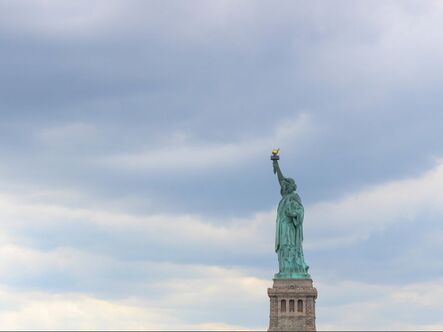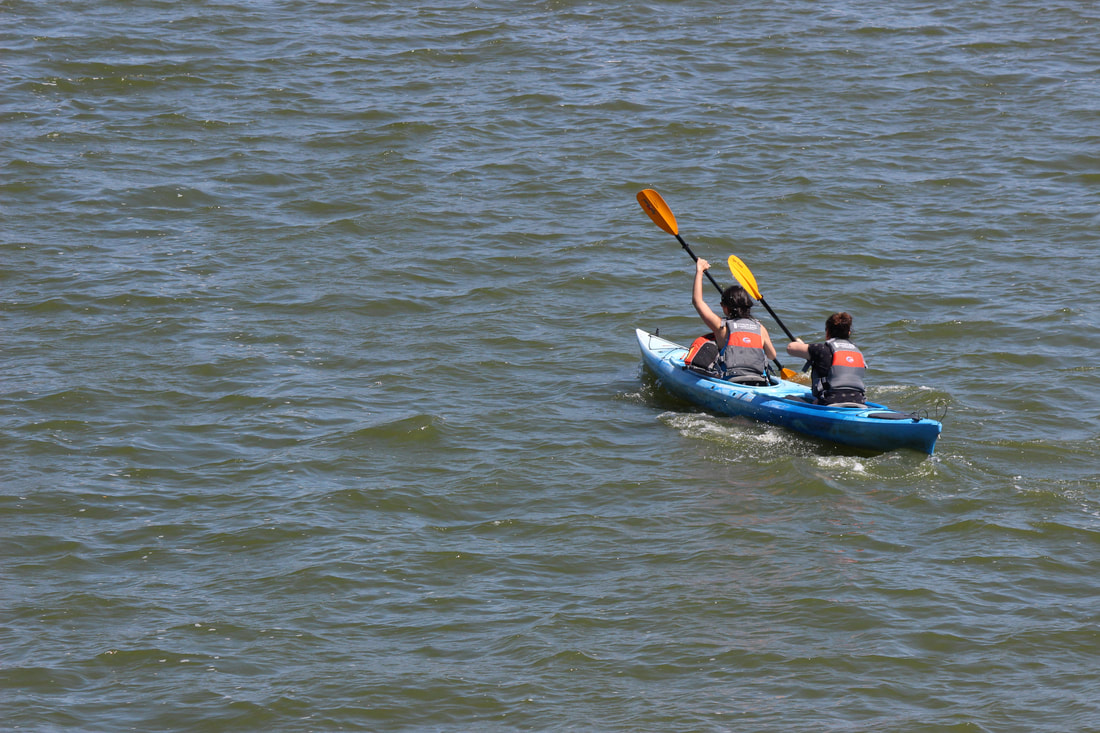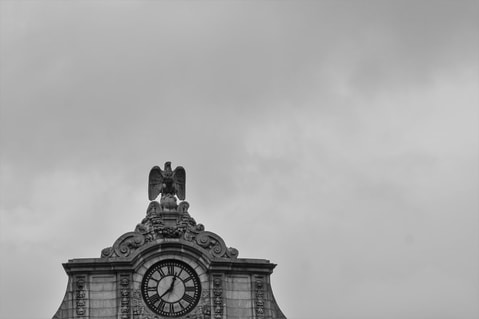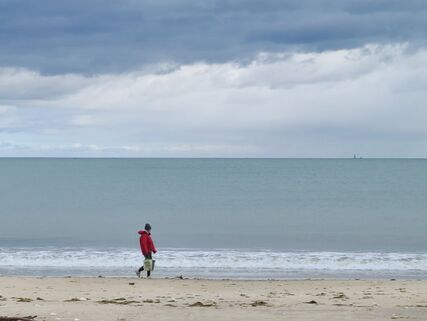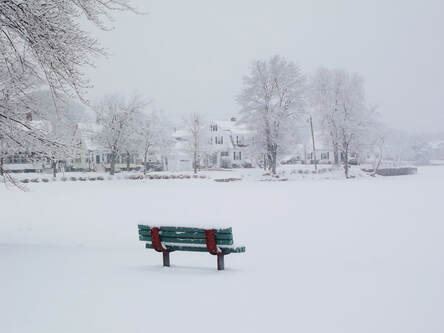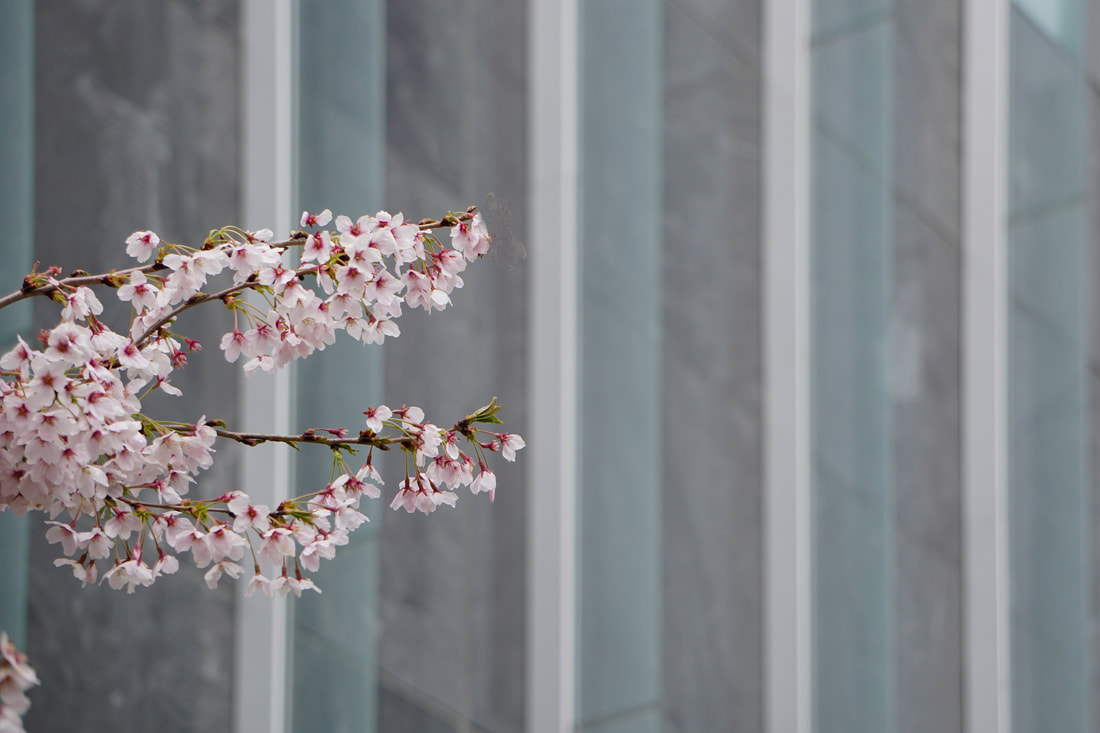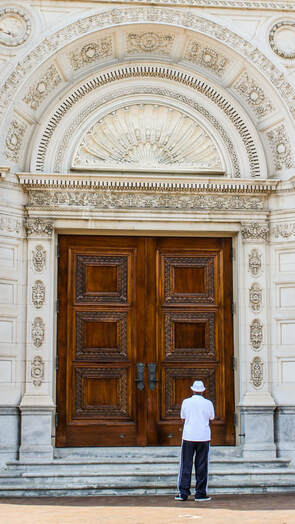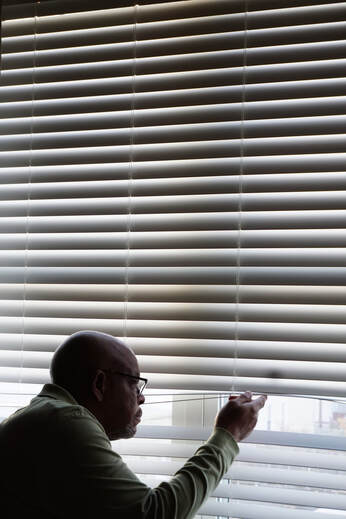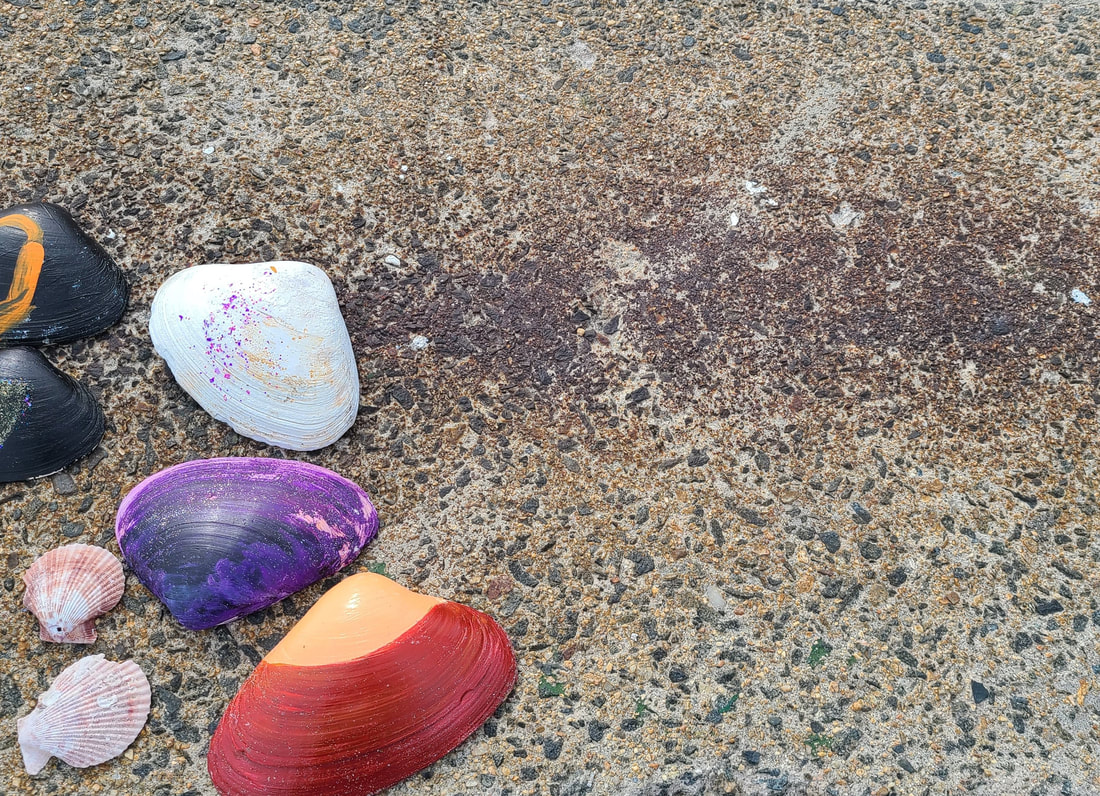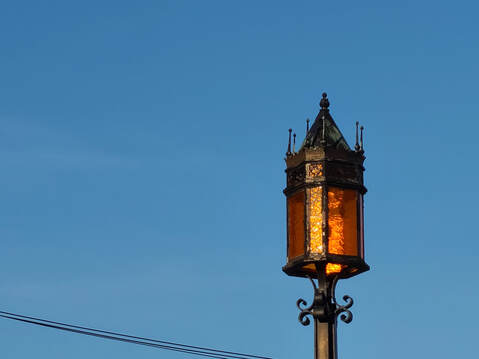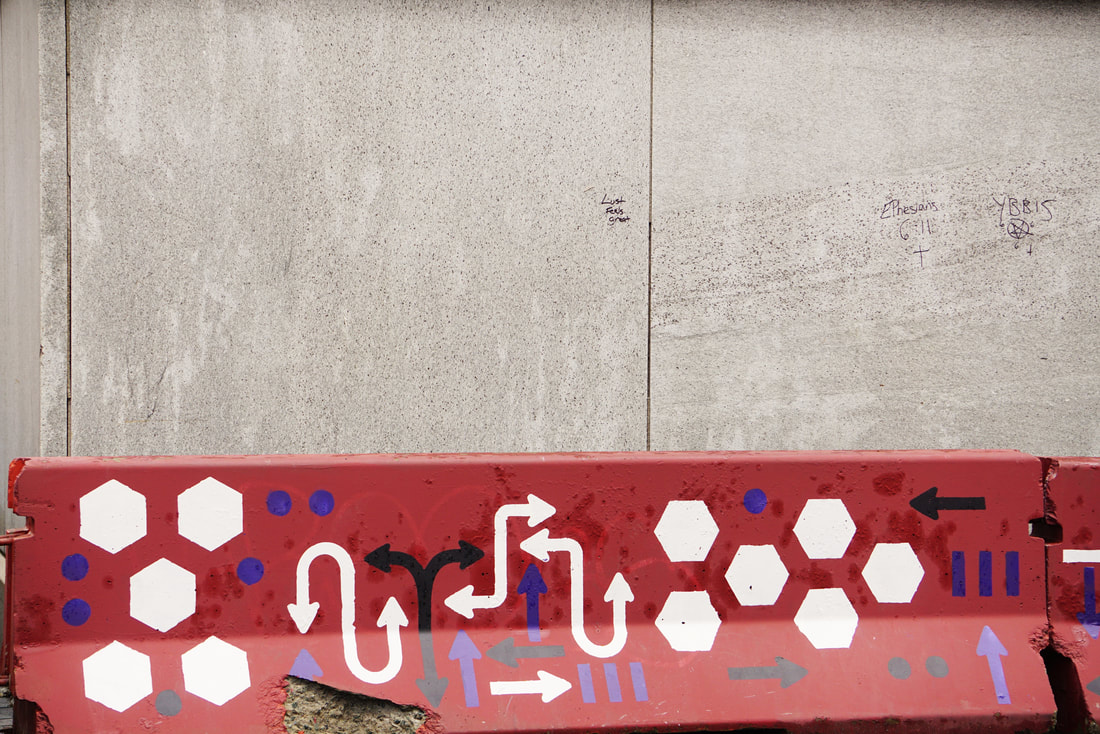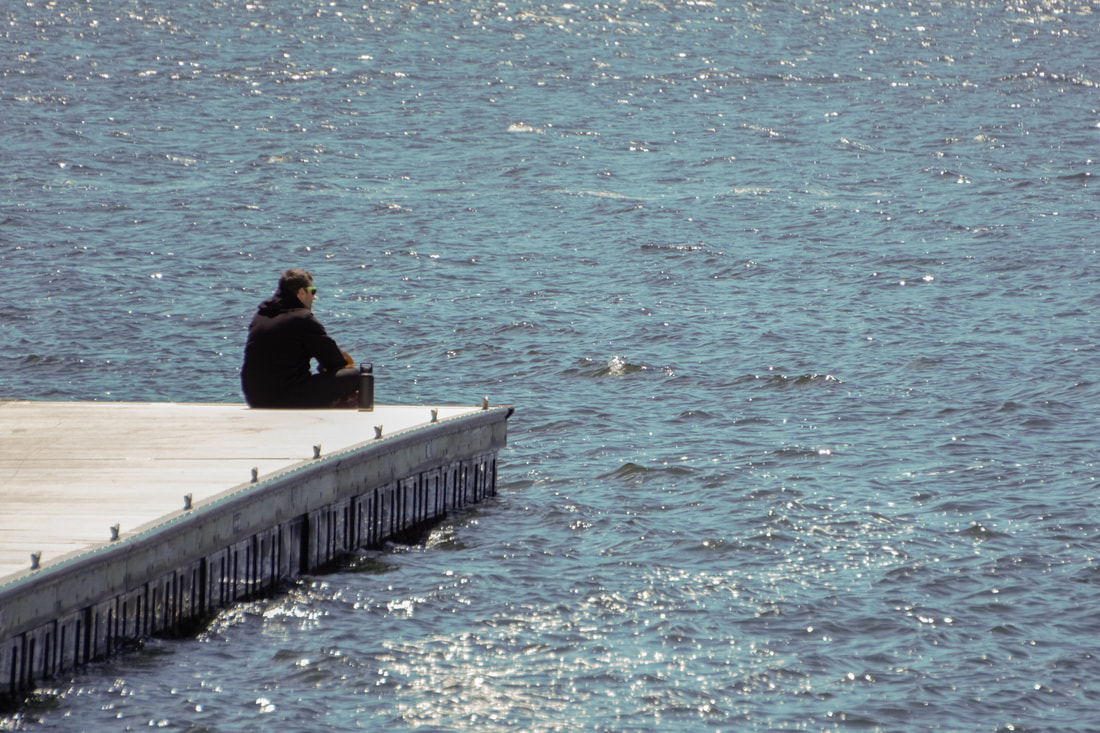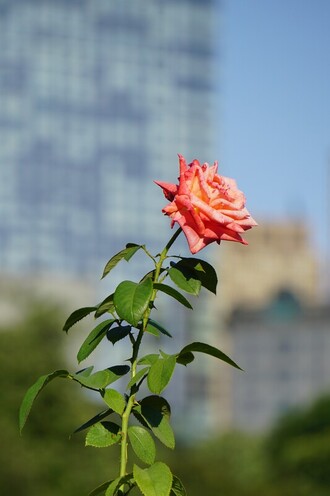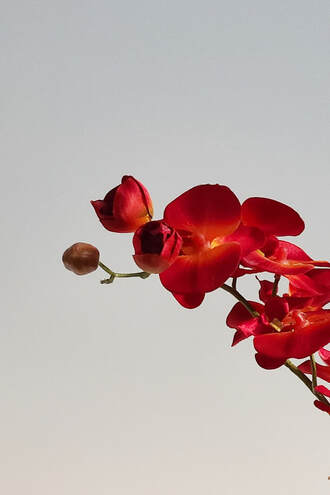Negative space photogrpahy
Negative space photography is a photo composition technique in which the primary subject of the photo occupies much less space in the image frame compared to the area surrounding it. The area surrounding the subject is called negative space. The area in the frame that the primary subject occupies is called the positive space.
In image #1 above, the sky takes up the majority of the area in the frame. The clouds and the sky are the negative space in the image. The sky and clouds are a nice background but no matter how many times the viewers eyes look at the sky, the eyes are drawn back to the smaller positive space area which is the Statue of Liberty.
The same basic concept applies to image #2. Instead of the negative space being the sky, it is the water. The viewers eyes are drawn to the positive space area which is two people in a canoe rowing in sync.
Why use Negative Space in your images? Depending on the subject, when the right balance of negative and positive space is used, negative space images may be more dramatic, show a sense of scale, or create a mood or emotion. Take a look at images 3 & 4 below.
The same basic concept applies to image #2. Instead of the negative space being the sky, it is the water. The viewers eyes are drawn to the positive space area which is two people in a canoe rowing in sync.
Why use Negative Space in your images? Depending on the subject, when the right balance of negative and positive space is used, negative space images may be more dramatic, show a sense of scale, or create a mood or emotion. Take a look at images 3 & 4 below.
In Image #3 above, the negative space lets you know that it was a cloudy, drab day. Yet the viewers eyes will still be drawn to the clock tower, (positive space) even letting you know what time the picture was taken.
Image #4 evokes a sense of scale showing how vast the ocean and sky are compared to the man walking on the beach. Yet the man walking on the beach still grabs the viewers attention.
Image #4 evokes a sense of scale showing how vast the ocean and sky are compared to the man walking on the beach. Yet the man walking on the beach still grabs the viewers attention.
The easiest way to produce negative space in an image is to use the sky, water, grass, the beach, a blank wall, or an uncluttered not too interesting area. The negative space should take up a much larger area of the image than the positive space. In some cases, the smaller the positive space portion of the image (your subject) , the better the effect. (as shown in image #4)
Should the Negative Space always be Blank or Empty? No, It doesn't have to be. The point of negative space photography is to ultimately have the viewers eyes drawn from the negative space to your positive space subject.
Pictures that are very busy with lots of different, interesting things in the negative space usually won't make good negative space images. Any viewer of a well balanced negative space picture will see the whole picture first and then be drawn to the positive space subject.
In image #5 below, the bench is the positive space. The negative space is the snow on the ground, the trees, and if you look hard enough, a few homes in the background. Yet the viewers eyes are still drawn back to the bench.
Pictures that are very busy with lots of different, interesting things in the negative space usually won't make good negative space images. Any viewer of a well balanced negative space picture will see the whole picture first and then be drawn to the positive space subject.
In image #5 below, the bench is the positive space. The negative space is the snow on the ground, the trees, and if you look hard enough, a few homes in the background. Yet the viewers eyes are still drawn back to the bench.
The negative space in image #6 above is the side of a building in the city. The building has flowing vertical lines, but the uneven branches and flowers from a tree beside it go against the pattern. What draws your attention more? That is the type of decision you will have to make when taking negative space pictures.
What's the Story? Some negative space images (like many other type photos) may cause the viewer to wonder what is going on in the image. That is all good, since it causes the viewer take a closer, longer look at the image including the positive space, whether the questions are answered or not.
Image #7 shows a man standing in front of a beautifully detailed structure with a large door. Although the details of the building might initially catch a viewers attention, the eyes are constantly drawn back to the man standing in front of it. It may make the viewer wonder if the man is thinking about going in, or is he just admiring the details of the structure. (or the viewer of the image can come to their own conclusion)
In image #8 the man is peeking through the venetian blinds. The blinds are uninteresting negative space which will cause the viewer to concentrate on the man. Of course, the viewer will wonder what he is looking at. The viewer of the image might also wonder why doesn't he just open all the blinds. It really doesn't matter. The point is that this type picture will hold the viewers attention a little longer than usual.
Composing Negative Space Images: When you first started taking pictures, you may have heard or learned that you should get closer or zoom in so that you can fill most or a good part of the frame with your subject.
That is a great photo composition rule that still stands. However, remember that in negative space photography, the negative space area(s) around your subject should occupy a larger area than your (positive space) subject.
Even a Basic Photo Composition rule like the Rule of Thirds can definitely at times assist in making good negative space images. However, you may notice that not every image on this page strictly follows the Rule of Thirds.
That is a great photo composition rule that still stands. However, remember that in negative space photography, the negative space area(s) around your subject should occupy a larger area than your (positive space) subject.
Even a Basic Photo Composition rule like the Rule of Thirds can definitely at times assist in making good negative space images. However, you may notice that not every image on this page strictly follows the Rule of Thirds.
For example, image #9 above doesn't exactly fall into the Rule of Thirds category. However, the painted sea shells are still the focal point of the image rather than the stony concrete that they are sitting on the which is the negative space.
On the other hand, image #10 falls into the guidelines of the rule of thirds while still qualifying as a negative space picture.
On the other hand, image #10 falls into the guidelines of the rule of thirds while still qualifying as a negative space picture.
Subjects for Negative Space Photography: Keep in mind that not all photography subjects will work well using the negative space principle. After some experimentation on your part, you will be better able to determine what subjects or scenes will work best for you as far as negative space photography goes.
Image #11 above is a picture of an old beat up car barrier sitting at the side of a building. The building wall is blank except for some hand written graffiti. Does the the artwork on the barrier catch your attention and make you wonder what is the point of the stop sign shapes or the curved arrows? Ok, then gotcha. It is another negative space picture drawing attention to the positive space.
Image #12 of the man sitting on the edge of the platform surrounded by water is one of those images that make you wonder why he is sitting there, what is he looking at, or whatever the viewer makes up in their mind.
Image #12 of the man sitting on the edge of the platform surrounded by water is one of those images that make you wonder why he is sitting there, what is he looking at, or whatever the viewer makes up in their mind.
Create Your Own Negative Space:
There may be times when you want to photograph a subject but the background/foreground may be too busy or distracting to make a good negative space image. However, with a camera that allows you to manually control settings like the camera aperture, and a long lens focal length, you may be able to create your own negative space around your subject.
There may be times when you want to photograph a subject but the background/foreground may be too busy or distracting to make a good negative space image. However, with a camera that allows you to manually control settings like the camera aperture, and a long lens focal length, you may be able to create your own negative space around your subject.
Image #13 is an example of a picture with shallow depth of field. Depth of Field is a reference as to how much of the area around the primary subject is in or out of focus. As you can see in image #13, the flower is in focus but the whole background is out of focus. Out of focus areas like that can be deliberately used for negative space. Check the Depth of Field page for more information about creating images with blurred backgrounds.
You could say that image #14 uses the easiest, ultimate way to create negative space. The picture of the artificial plant was taken against a blank wall. There is nothing in the background to cause the viewers eyes to look at anything else in the image except the plant.
Conclusion: You have seen that negative space pictures can be taken of very different subjects or scenes. You can use basic photo composition techniques like the Rule of Thirds or not. The most important thing to remember is that you must use a large enough negative space area without too much in it to distract the viewers eyes from the subject which is your positive space.
Negative Space Photography can work well for anyone who wants to try something different, or for those who have lots of creative juices. In any case, It is worth giving it a try.
You could say that image #14 uses the easiest, ultimate way to create negative space. The picture of the artificial plant was taken against a blank wall. There is nothing in the background to cause the viewers eyes to look at anything else in the image except the plant.
Conclusion: You have seen that negative space pictures can be taken of very different subjects or scenes. You can use basic photo composition techniques like the Rule of Thirds or not. The most important thing to remember is that you must use a large enough negative space area without too much in it to distract the viewers eyes from the subject which is your positive space.
Negative Space Photography can work well for anyone who wants to try something different, or for those who have lots of creative juices. In any case, It is worth giving it a try.
